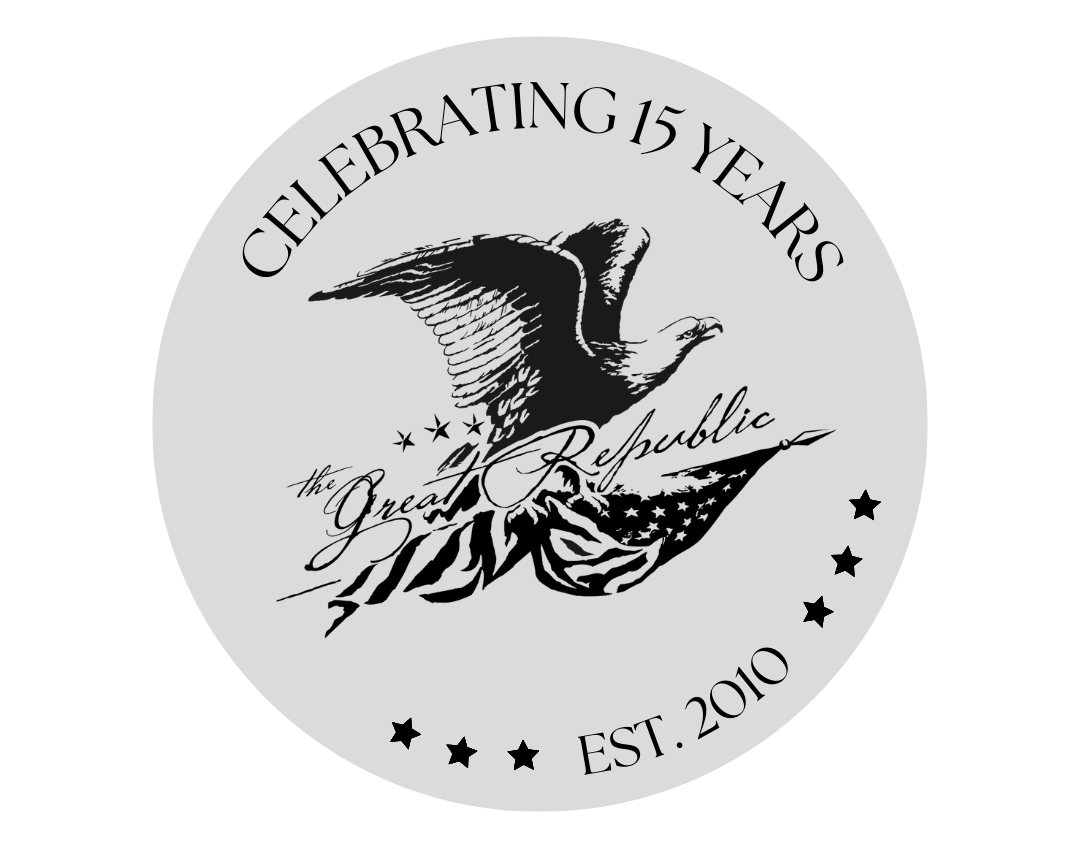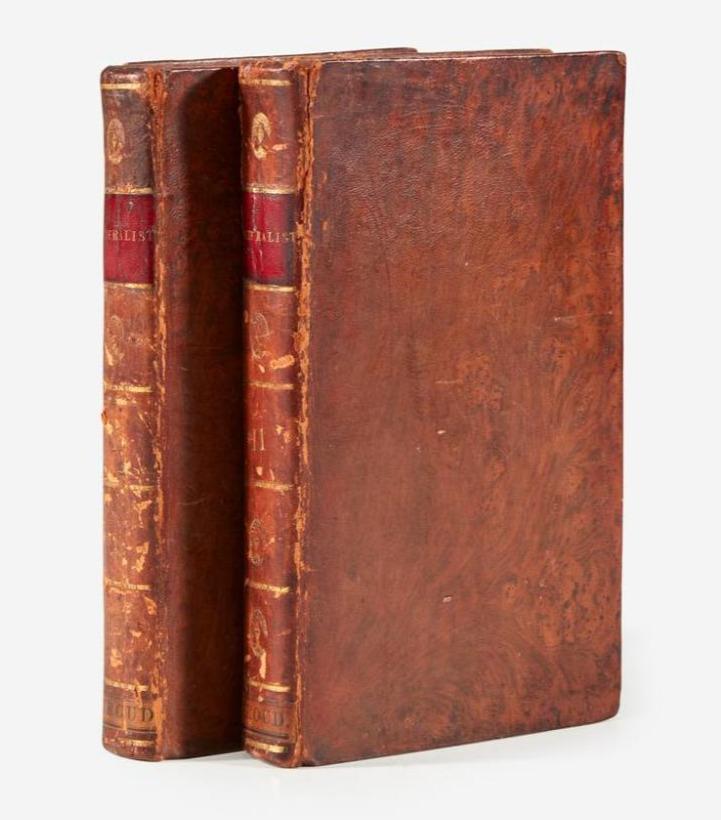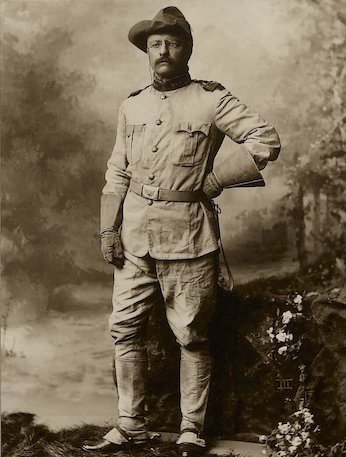Jane Austen's Publishing History and Road to Literary Fame
New to our DC shop is a beautiful six volume set of Jane Austen’s novels, published by Richard Bentley & Son, in London. This “Austen Standard Novels” set includes Sense and Sensibility, Emma, Pride and Prejudice, Mansfield Park, Northanger Abbey, Persuasion, and is coupled with A Memoir of Jane Austen by her nephew J. E. Austen Leigh and several unfinished works, including Lady Susan.
Jane Austen (1775-1817) was an English novelist known primarily for her six major novels, which interpret, critique and comment upon the British landed gentry at the end of the 18th century. And while Austen is considered firmly part of the literary canon today, Austen road to literary fame was a long one.

Engraved frontispiece portrait of Jane Austen, from Vol. VI of "Austen Standard Novels" published by Richard Bentley. LINK.
Austen published her first novel Sense and Sensibility (1811), with the help of her brother Henry. Henry and the publisher Thomas Egerton agreed to publish Sense and Sensibility, “on commission," that is, at the author's full financial risk. Austen would not earn any money for book sales until the publisher’s full printing and advertising costs were recouped. Austen published this book, and the next three, Pride and Prejudice (1813), Mansfield Park (1814), and Emma (1816), all anonymously. These books, although of great personal importance to Austen, brought her only moderate success and very little fame during her lifetime. Austen wrote two additional novels, Northanger Abbey and Persuasion, both of which were published posthumously in 1818, and began another, eventually titled Sanditon, but died before its completion.
After 1818, Austen’s novels remained out of print for 14 years until the publisher Richard Bentley purchased the rights to all six novels from Henry and Cassandra Austen and T. Egerton in 1832. In 1833, Bentley issued the first inexpensive editions as part of his “Standard Novels” series. The books were published in single volumes, each with an engraved frontispiece as illustration. Bentley hired illustrator Ferdinand Pickering, who chose to illustrate Austen’s female characters in anachronistic Victorian garb, rather than the Regency fashion of Austen’s characters, making Austen seem fresh and timely to contemporary readers.

Engraved frontispiece illustration for Emma: A Novel by illustrator Ferdinand Pickering, with the titular character adorned in Victorian fashions. From Vol II of "Austen Standard Novels," published by Richard Bentley. LINK.
The Bentley editions were published in calico cloth boards, but could be purchased bound in more substantial leather for an additional cost. Bentley’s target market was the private buyer, as many circulating libraries still had copies of Austen’s original issues. His books were sold at a lower cost, which allowed him to target the middle class. These early Bentley editions were more attainable than true first editions of Austen’s books and were very popular with middle class collectors. Although his “Austen Standard Novels” were not sold at first as a collected edition, they soon became so, issued at regular intervals by Bentley.
At the time of the Bentley reissues, Jane Austen was still regarded as a niche writer. Only a few hundred copies of her books were published and reprinted over the years. When Bentley’s copyrights expired, other printers began to publish her works, but book sales remained modest. In an 1859 review of Jane Austen’s novels by George H.Lewes, “The Novels of Jane Austen” published in Blackwood’s Edinburgh Magazine, Lewes is very positive about Jane Austen and her works, yet the critic has to mention that she is fairly “unknown to men” and is hardly mentioned “among the glories of literature.” Despite her plot only consisting of what Lewes calls “character and motive,” Lewes still praises Austen as an artist. He concludes that “Miss Austen’s works must possess elements of indestructible excellence, since, although never ‘popular,’ she survives writers who were very popular; and forty years after her death, gains more recognition than she gained when alive.”
It was not until the publication of her nephew James Edward Austen-Leigh’s A Memoir of Jane Austen in 1869, fifty two years after her death, that interest in Jane Austen was renewed. A Memoir of Jane Austen introduced a sentimental picture of Austen as a quiet, middle-aged maiden aunt and reassured the public that her work was suitable for a respectable Victorian family. A Memoir of Jane Austen was promptly added to the Bentley “Austen Standard Novel” set, along with Lady Susan and other unfinished writings, as the sixth volume in 1871 and was reprinted until the copyright was transferred to MacMillan & Co. in 1898.

Title page to A Memoir of Jane Austen, by Her Nephew J. E. Austen Leigh to Which is Added, Lady Susan and Fragments of Two Other Unfinished Tales by Miss Austen., issued as Volume VI in "Austen Standard Novels," published by Richard Bentley and, later, Macmillan & Co. LINK.
At the turn of the century, Austen’s popularity soared, with book sales to match. Members of the literary elite, who had claimed an appreciation of Austen as a mark of culture, reacted against this popularization of her work. They referred to themselves as “Janeites” to distinguish themselves from the masses who, in their view, did not properly understand Austen.
More serious literary analysis also placed Austen firmly within the literary canon, elevating her status as a writer worthy of study and analysis. In an 1870 North British Review, Richard Simpson described Austen as a serious yet ironic critic of English society. He introduced two interpretative themes which later became the basis for modern literary criticism of Austen's works- humor as social critique and irony as a means of moral evaluation. Simpson wrote that Austen, “began by being an ironical critic; she manifested her judgment ... not by direct censure, but by the indirect method of imitating and exaggerating the faults of her models. ... Criticism, humour, irony, the judgment not of one that gives sentence but of the mimic who quizzes while he mocks, are her characteristics.” Twenty years later, Godwin Smith published the Life of Jane Austen, the first of formal criticism of Jane Austen’s writing in 1890. In 1892, J. M. Dent published the first collected edition of her works to include critical commentary. The first scholarly editions, edited by R. W. Chapman, were published in 1923.
Whether celebrated for her writing style, her subject matter, or her cultural and literary status, Jane Austen continues to be collected by book collectors and scholars alike, making our own six-volume Bentley “Austen Standard Novels“ set a collectible truly reflective of the 19th and 20th century fervor surrounding the great writer.






